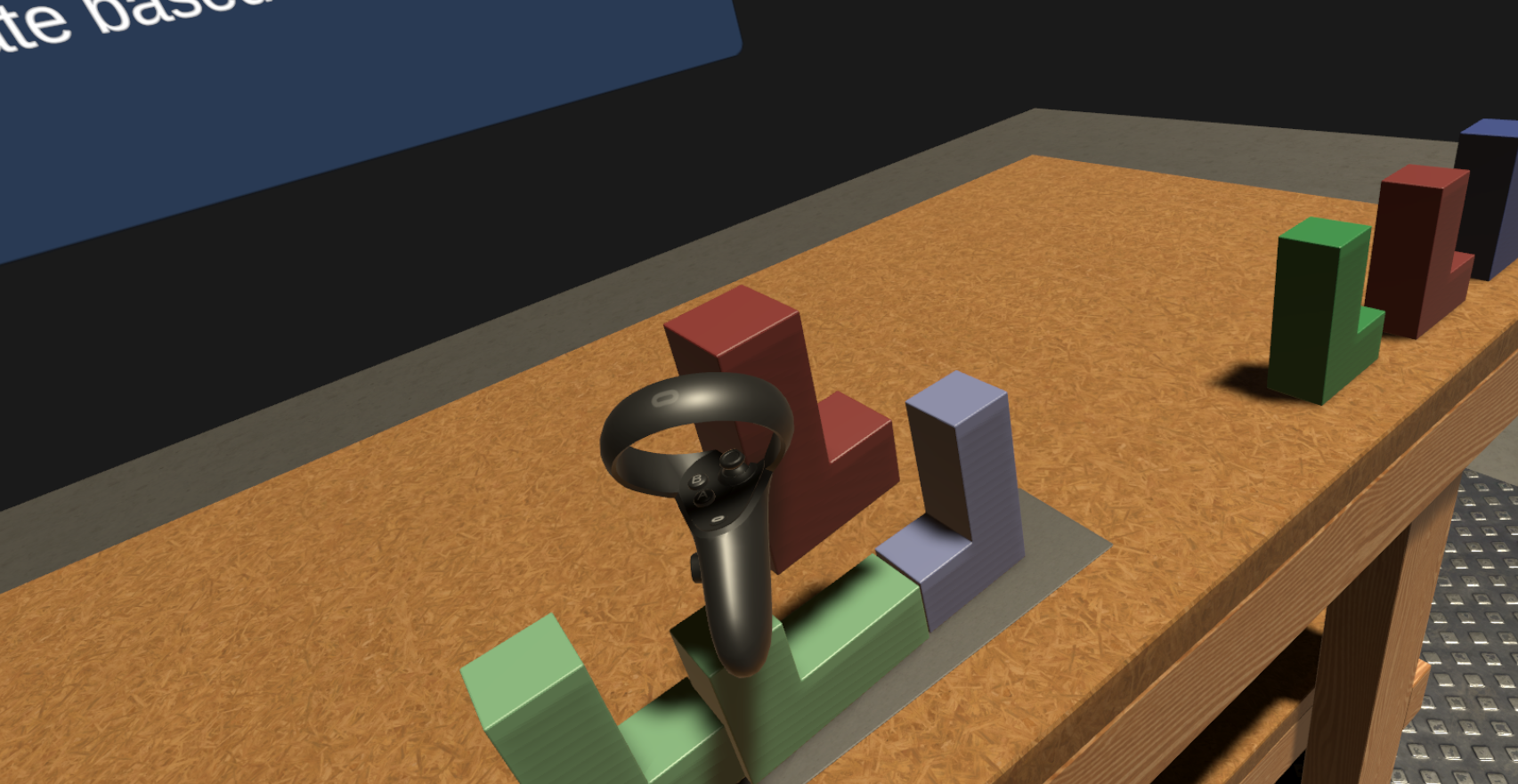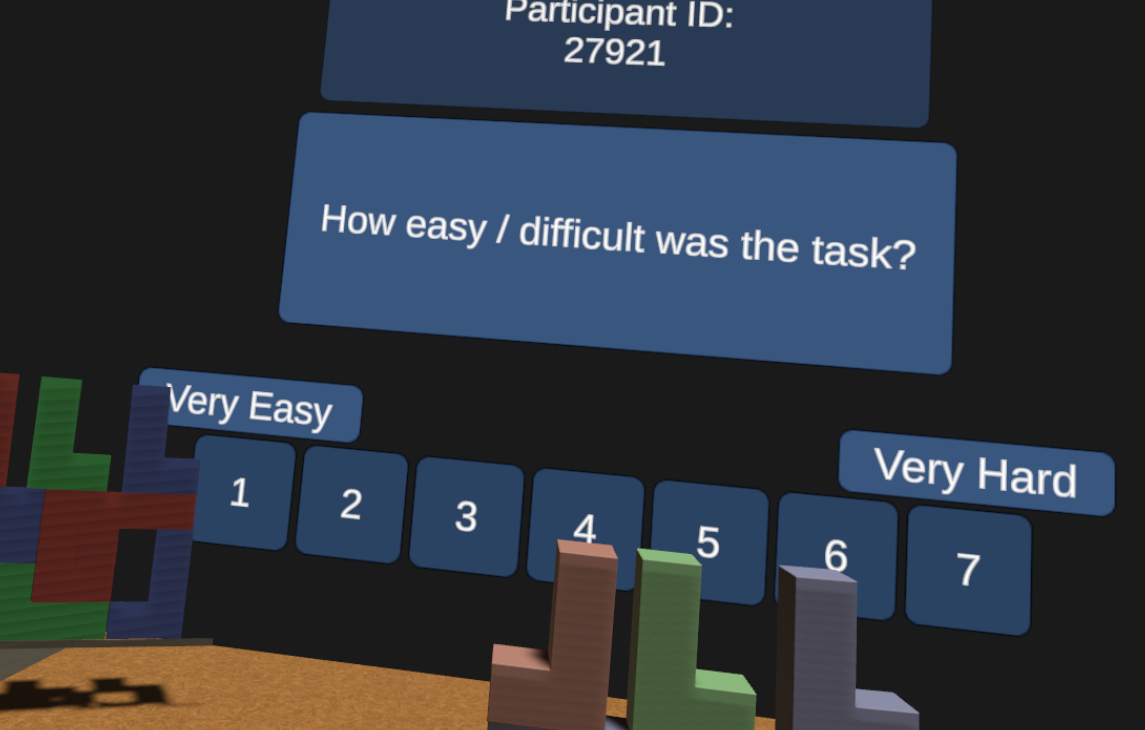Pseudo Haptic Drift Correction in VR
September 2020 – May 2021
VR, C#, Unity
As part of my degree, I did a project over 6 months. The abstract of my project is as follows.
Virtual reality is about stimulating the senses to create the illusion that the user exists in a simulated world. This is commonly achieved through the visual and auditory senses. It is also possible to stimulate the users sense of touch using haptics. Haptics are not widely available, so we looked at pseudo haptics which is the method of creating the illusion of haptic stimulation using other senses. A recently proposed pseudo haptic mass illusion discussed how to create the illusion of objects having mass without using haptics. This project is about refining this pseudo haptic mass illusion. The technique involves creating a drift between the physical and real controller positions / rotations. We look at different techniques to correct this pseudo haptic drift whilst maintaining the embodiment illusion. In the project we implemented the pseudo haptic mass technique in a virtual reality application. We designed and implemented 8 techniques to correct the pseudo haptic drift. We ran a user study to compare the most effective correction method to realign the pseudo haptic drift. We find that our results indicate some techniques are better at correcting the drift than others whilst maintaining the embodiment illusion.

